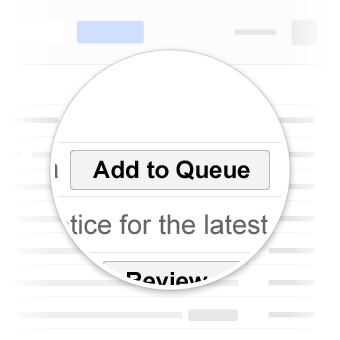This article shows how to build an App Engine app in Python that sends annotated emails to users asking to confirm a mailing list subscription directly from their inbox and collects the subscriptions in the Datastore.
Prerequisites and project setup
This guide assumes you have already installed the App Engine SDK and know how to create, run, and publish App Engine projects.
First, create a directory for your project. Put all of the files for your application in this directory.
Copy the following code to a file named app.yaml and replace the {{ APPID }} placeholder with your unique App Engine app id:
application: {{ APPID }}
version: 1
runtime: python27
api_version: 1
threadsafe: true
handlers:
- url: /.*
script: main.app
libraries:
- name: jinja2
version: latest
Create a file named main.py in your App Engine project folder and copy the following code to setup the handlers for collecting and listing subscriptions, and for sending annotated emails:
import webapp2
from emailsender import EmailSender
from subscribe import SubscribeHandler
app = webapp2.WSGIApplication([('/', SubscribeHandler), ('/email', EmailSender)], debug=True)
Adding structured data to the email
Let's start with a very simple email asking the user to confirm a mailing list subscription:
<html>
<head>
<title>Please confirm your subscription to Mailing-List XYZ?</title>
</head>
<body>
<p>
Dear John, please confirm that you wish to be subscribed to the
mailing list XYZ
</p>
</body>
</html>
You can add structured data in one of the supported formats (JSON-LD or Microdata) to the head of the email to define the restaurant and add a OneClickAction. Gmail supports the OneClickAction and shows a specific UI to users to allow them to confirm their subscription from their inbox.
Copy the following markup into a file named mail_template.html:
JSON-LD
<html>
<head>
<title>Please confirm your subscription to Mailing-List XYZ?</title>
</head>
<body>
<script type="application/ld+json">
{
"@context": "http://schema.org",
"@type": "EmailMessage",
"potentialAction": {
"@type": "ConfirmAction",
"name": "Confirm Subscription",
"handler": {
"@type": "HttpActionHandler",
"url": "{{ confirm_url }}",
"method": "http://schema.org/HttpRequestMethod/POST",
}
},
"description": "Confirm subscription to mailing list XYZ"
}
</script>
<p>
Dear John, please confirm that you wish to be subscribed to the mailing list XYZ.
</p>
</body>
</html>
Microdata
<html>
<head>
<title>Please confirm your subscription to Mailing-List XYZ?</title>
</head>
<body>
<div itemscope itemtype="http://schema.org/EmailMessage">
<div itemprop="potentialAction" itemscope itemtype="http://schema.org/ConfirmAction">
<meta itemprop="name" content="Approve Expense"/>
<div itemprop="handler" itemscope itemtype="http://schema.org/HttpActionHandler">
<link itemprop="url" href="https://myexpenses.com/approve?expenseId=abc123"/>
<meta itemprop="url" content="{{ confirm_url }}"/>
<link itemprop="method" href="http://schema.org/HttpRequestMethod/POST"/>
</div>
</div>
<meta itemprop="description" content="Approval request for John's $10.13 expense for office supplies"/>
</div>
<p>
Dear John, please confirm that you wish to be subscribed to the mailing list XYZ.
</p>
</body>
</html>
The structured data above describes a mailing list called "XYZ" and a ConfirmAction. The handler for the action is a HttpActionHandler that sends POST requests to the URL specified in the url property.
Sending subscription requests to the users
Copy the following code into a file named emailsender.py in the App Engine project folder:
import jinja2
import os
import webapp2
from google.appengine.api import mail
from google.appengine.api import users
from urlparse import urlparse
class EmailSender(webapp2.RequestHandler):
def get(self):
# require users to be logged in to send emails
user = users.get_current_user()
if not user:
self.redirect(users.create_login_url(self.request.uri))
return
email = user.email()
# The confirm url corresponds to the App Engine app url
pr = urlparse(self.request.url)
confirm_url = '%s://%s?user=%s' % (pr.scheme, pr.netloc, user.user_id())
# load the email template and replace the placeholder with the confirm url
jinja_environment = jinja2.Environment(
loader=jinja2.FileSystemLoader(os.path.dirname(__file__)))
template = jinja_environment.get_template('mail_template.html')
email_body = template.render({'confirm_url': confirm_url})
message = mail.EmailMessage(
sender = email,
to = email,
subject = 'Please confirm your subscription to Mailing-List XYZ',
html = email_body)
try:
message.send()
self.response.write('OK')
except:
self.error(500)
The EmailSender class requires the user to be logged-in so that their email address can be retrieved. Then, it loads the email body from mail_template.html, replaces the confirm_url placeholder in it with the root url of the App Engine app (https://APP-ID.appspot.com), and sends the email to the currently logged-in user as themselves.
Collecting and listing subscriptions
Copy the following code into a file named subscribe.py in the App Engine project folder:
import webapp2
from emailsender import EmailSender
from google.appengine.ext import db
class SubscribeHandler(webapp2.RequestHandler):
def post(self):
user_id = self.request.get('user')
# insert the subscription into the Datastore
subscription = Subscription(user_id=user_id)
subscription.put()
def get(self):
# retrieve up to 1000 subscriptions from the Datastore
subscriptions = Subscription.all().fetch(1000)
if not subscriptions:
self.response.write('No subscriptions')
return
count = len(subscriptions)
for s in subscriptions:
self.response.write('%s subscribed<br/>' % (s.user_id))
self.response.write('<br/>')
self.response.write('%d subscriptions.' % (count))
class Subscription(db.Model):
user_id = db.TextProperty(required=True)
The SubscribeHandlerclass listens to bothPOSTandGETrequests sent to the app root url (https://APP-ID.appspot.com).POSTrequests are used by Gmail to insert new subscriptions including theuser_id` parameter that corresponds to the user, as in the following example:
https://subscribe.appspot.com/?user_id=123abcd
The request handler simply checks that the required user_id is defined and then stores the subscription in the Datastore. This results in a HTTP 200 response code being sent back to Gmail to signal the successful request. In case the request doesn't include the required field, the request handler will return a HTTP 400 response code, signaling the invalid request.
GET requests to the app root url are used to list the subscriptions that have been collected. The request handler first fetches all subscriptions from the Datastore and then prints them in the page, together with a simple counter.
Testing the app
Deploy your app to App Engine and visit https://APP-ID.appspot.com/email (replace APP-ID with your App Engine app id) to send the annotated email to yourself.

Once you have deployed your app and inserted some subscriptions, visit your app at https://APP-ID.appspot.com to get a page summarizing the subscriptions